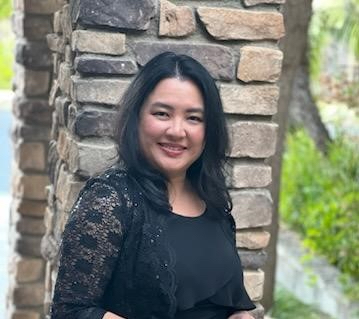Oscar-Nominated VFX Supervisor Paul Lambert on Infrared Insanity in “Dune: Part Two”
In the first part of our conversation with Oscar nominee Paul Lambert, the visual effects supervisor of Dune: Part Two emphasized the benefits of utilizing as many of the practical shots as possible to maximize believability. A veteran of more than 25 years, he is aware that his best work may well go unnoticed: “My goal with visual effects is more about trying to hide everything I do than to make it stand out.” Today, he takes us into the black-and-write gladiator fighting sequence shot in infrared and how the thrilling worm-riding sequences were accomplished.
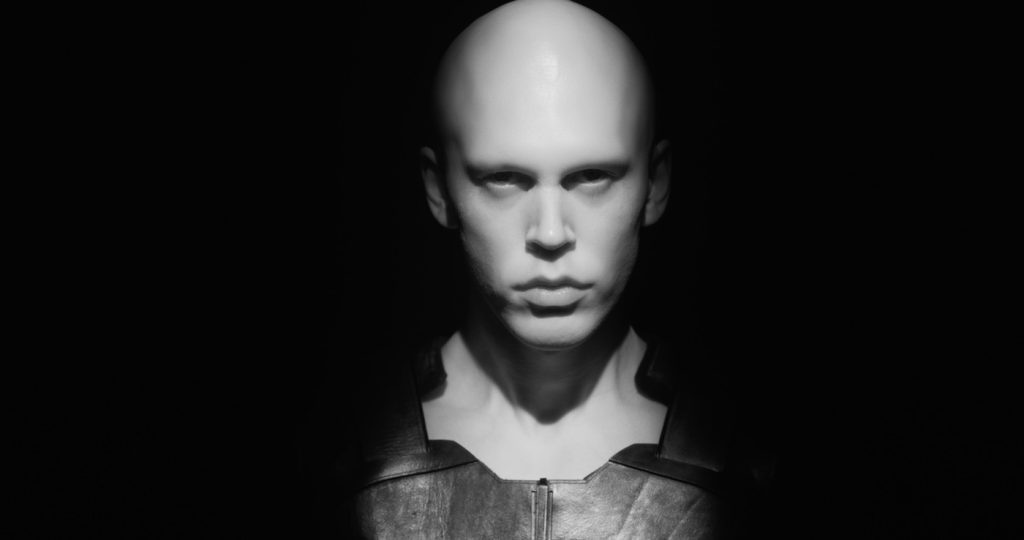
How long did it take to complete VFX on this sequel?
22 months for me, from soft prep through prep, the shoot, and into post.
How big was your team?
Hundreds. I dealt directly with supervisors from each place—two supervisors at DNEG, one each at Wyley Co, Territory Studio, MPC, and RodeoFX. And each of them potentially had hundreds working for them across Vancouver, the U.K., Sydney, and Mumbai.
In the opening scene, Paul and Lady Jessica are hunted down by Harkonnen soldiers along these mountains on the desert planet Arrakis. At one point, the soldiers float up a rock face. How was that done?
We used six or seven different locations because of the light and the rock structure, so it was tricky maintaining continuity. Our stunt coordinator found positions in the sand that would work with cranes so that we could lift each soldier up on a big rope. They ran, and we took them as far as we could before it transitioned into CG. Rather than completely CG, we try to keep as much of it practical as possible until it doesn’t work, then we change to a digital version, which then goes up the mountain. When we’re looking down, we’re still pulling the Harkonnen soldiers up, but the ones further down are digital because we’ve just pushed the ground away to make it look like it’s a lot higher. For safety reasons, that was shot a lot closer to the ground.
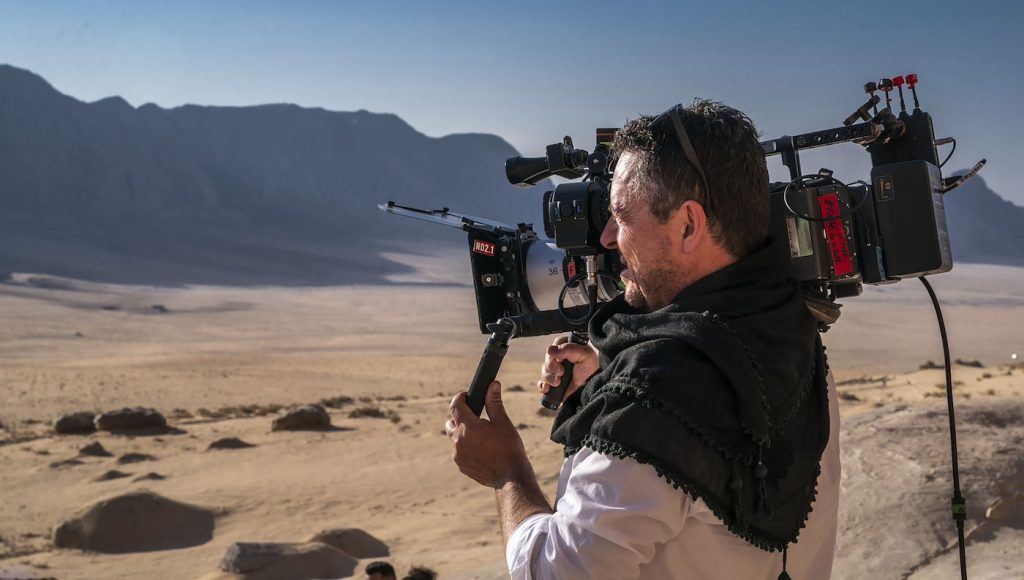
Photo by Niko Tavernise
In the gladiator battle sequence, Fyed-Rautha (Austin Butler) fought under the black sun on Geidi Prime, and that black-and-white sequence was shot in infrared (“IR”), right?
Yes, that was an interesting one. It was one of the first things we did in Budapest. Denis wanted this otherworldly look for the world of Geidi Prime, and he and [cinematographer] Greig [Fraser] came up with this idea of doing everything in IR. It’s a very bold move because you can’t undo this once you’ve modified the cameras and taken out all the filters. You have to shoot in a very particular way. Greig shot everything to test every scenario. On one of the tests, two crew members were each wearing a black T-shirt, but through IR, one of them turned white, and the other one stayed black—it was impossible to figure out with the naked eye how and when the colors would change. When the costume department ran all their costumes through IR, one of the Baron’s black suits and Bene Gesserit’s black costume turned white. Denis absolutely loved it. I even tested the gaffer tape.
How did shooting in IR change your process?
That particular sequence was such a high-contrast view—we had white sand on the ground that we shot outside on sunny days in Budapest against the dark shadows, so there was massive contrast. I was worried about putting the stadium around them. But we were able to keep the shadows—every shadow you see in that sequence is the original shadow, except we’ve changed some of the shapes. We kept that because when you start changing something super high contrast, your eye picks up on it, and it no longer looks believable. We didn’t want to break the integrity of the image. Denis never wants a visual effect that takes you out of the movie. If we need to adapt something so it doesn’t make the visual effects stand out, we do that. And that’s a very rare thing. Another interesting thing that happened was that one of the soldiers fighting Fyed was covered in tattoos, and we could see it in IR, even after hair and makeup had painted them out. That didn’t fit the aesthetic of the film, so I had to deal with that in post. The tattoos were on his whole chest, arm, and back. It was quite complicated and took months to fix.
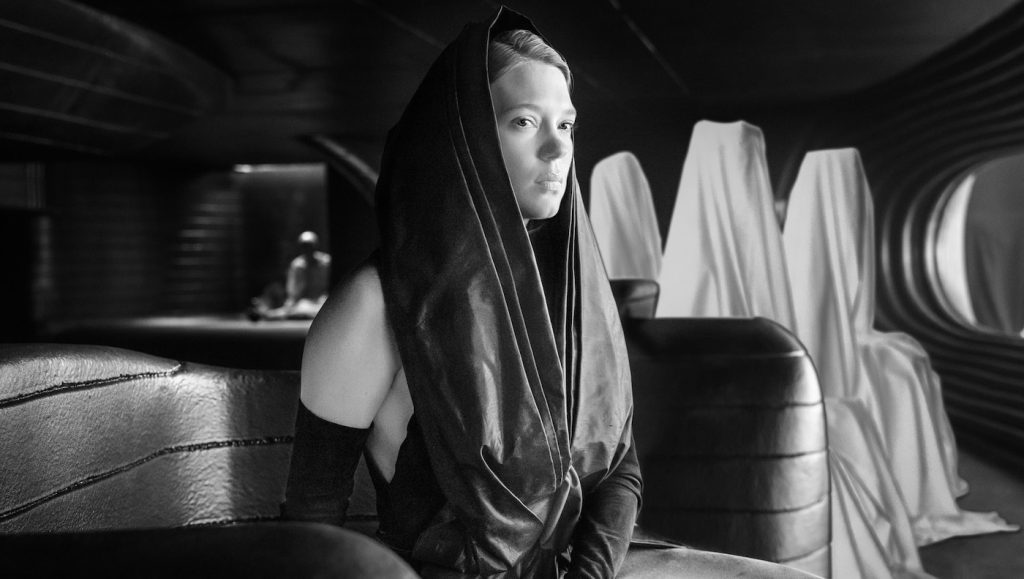
Now, let’s dig deeper into that first insane worm-riding sequence with Paul.
We spent a long time trying to find a dune for that sequence. Once we found it, there was a particular time of day when we could replicate the top section of that, when Paul is running and collapses down the dune. Our special effects supervisor set up three metal tubes in this smaller dune that we had created so the stunt guy could run along the ridge and get pulled and fall into the dune. Then, I extended the dune using aerial plates to make it feel as if we were way the heck higher. Because we were chasing the light, we could only do that at dawn. That took four attempts: we went back to the same spot on four different days to pull this off.
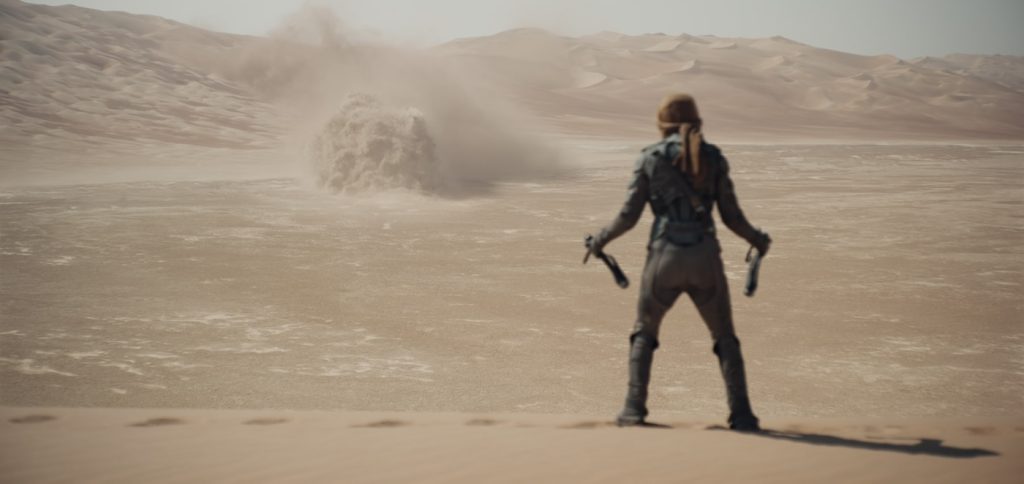
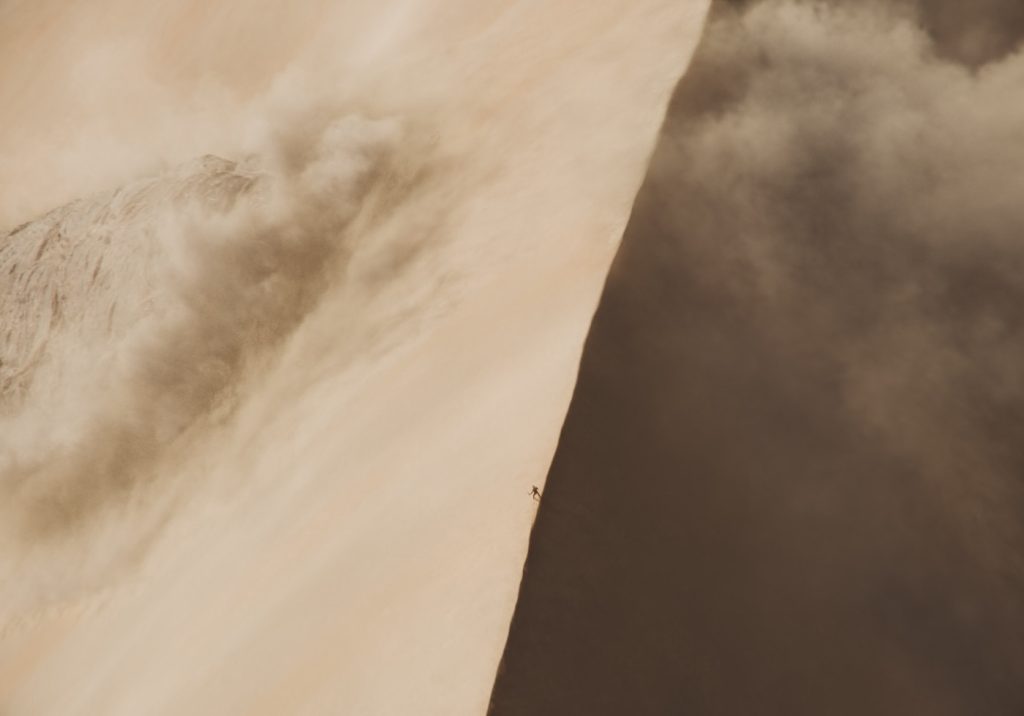
Your VFX team also had to chase the light with the rest of the crew.
Yes, visual effects had to capture that same time of day, so we can replicate that using other plate photography and CGI to match it exactly. This way, you buy that this huge worm has just crashed through this dune. [Special Effects Supervisor] Gerd [Nefzer] and [production designer] Patrice [Vermette] built a section of the worm in this sand-colored enclosure. The gimbal on it allowed us to change angles on it quite violently and spin it around. The crew who shot this sequence—we called them the “worm unit”—was run by [producer] Tanya Lapointe, and they could only shoot on sunny days. So it took a good few months to shoot that; sometimes, one shot would take a few days.
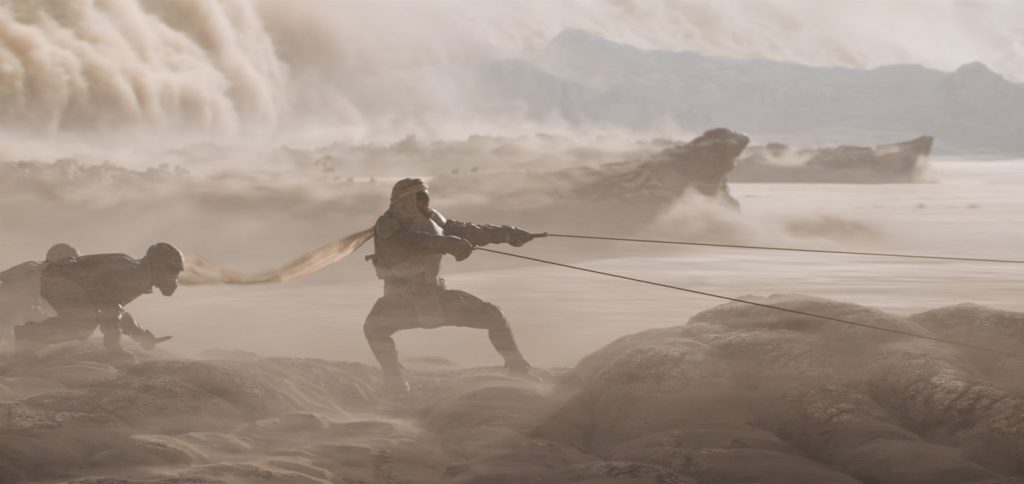
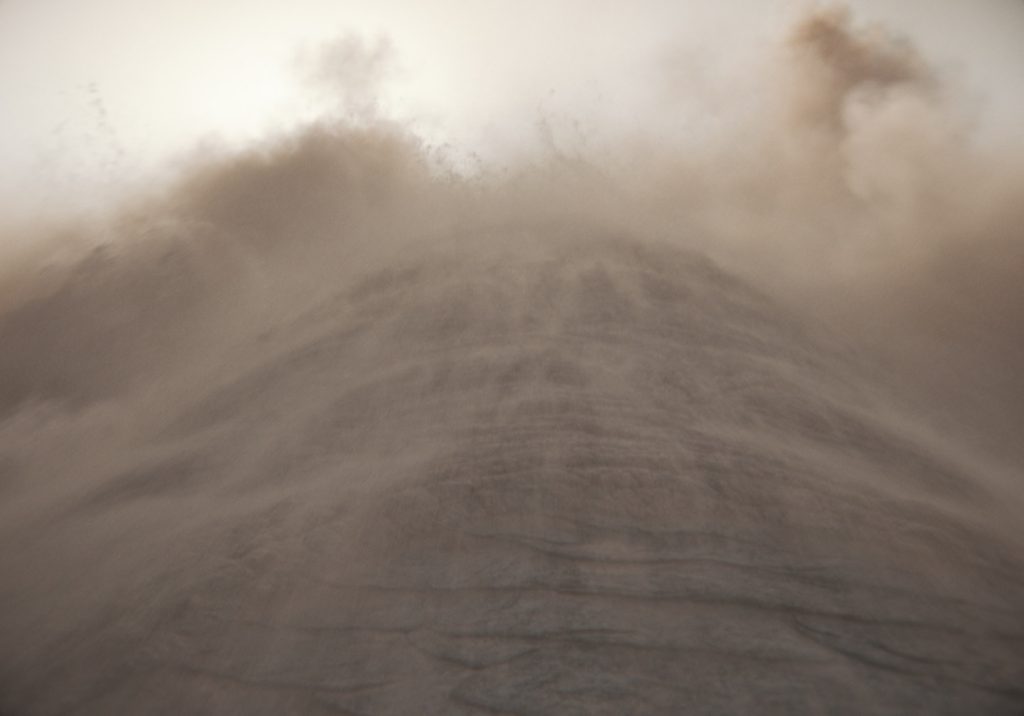
Riding on this practical worm and being blasted with dust the entire day gave us some continuity issues. The stunt guy’s stillsuit was completely orange by the end of the day. So, in post, we extended some of the backgrounds and the worm, adding additional dust and all the helicopter plates. Because we had such a good capture, it’s kinda hard to mess up. But it was still a tricky sequence to integrate, and it took a long time to make it all look believable. It’s super rare to have that kind of time for a sequence like that.

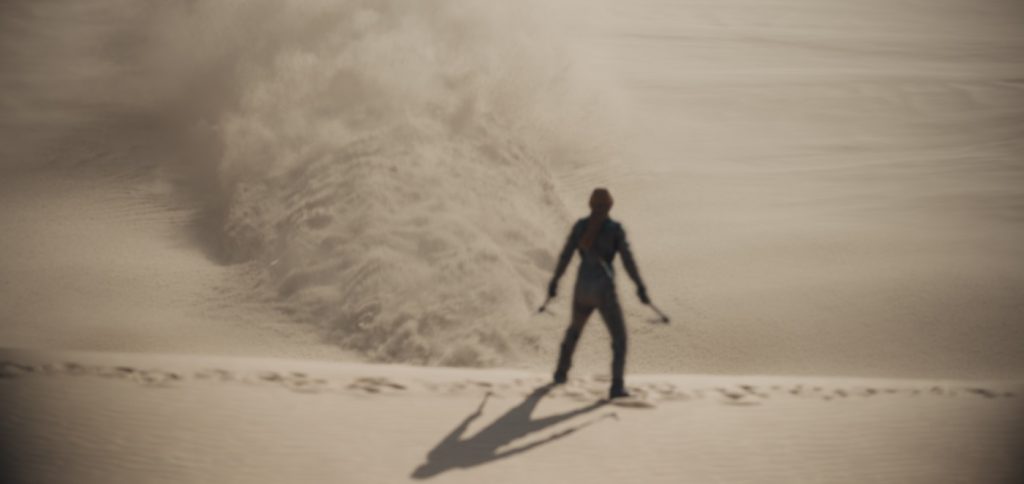
Fremen warrior Chani (Zendaya)—and Paul’s romantic partner—also has a worm-riding scene. Was that handled like Paul’s sequences?
For that 30-second shot where Chani runs through a crowd while beating everybody up, we motion-captured the stunt performers doing all of that fighting. So that’s all digital until the very end when she turns into the camera, and we shot that in the desert with Zendaya. By having something real shot, we could back-time everything to fit that. Something that doesn’t usually happen is we brought Greig Fraser back in deep into the post so that he could take a virtual camera and see all the CG in front of him. Then, he re-photographed that particular move. Even though it was all CG, Greig actually did the photography for that all-CG shot. When you’re able to bring the DP back into post, it makes all the difference.
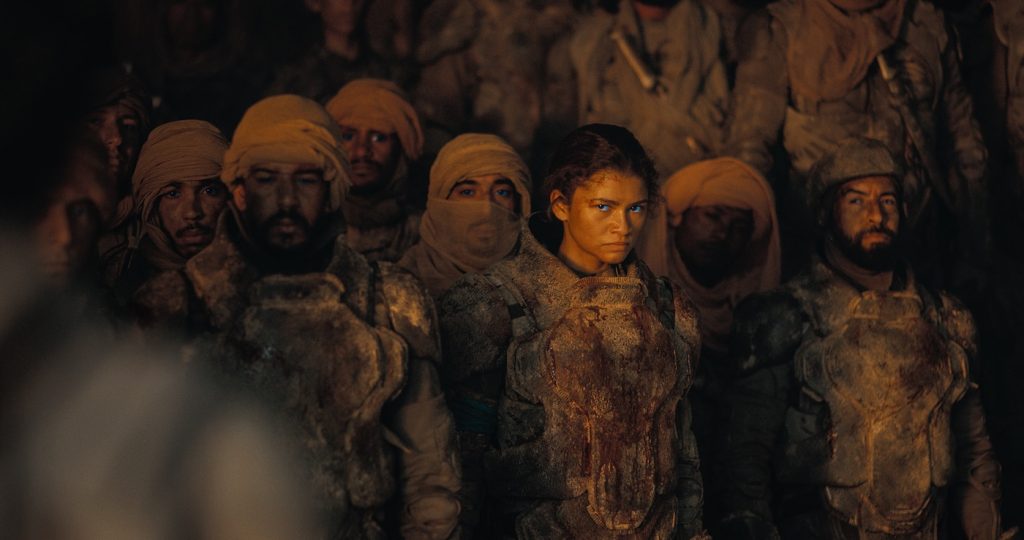
Nominated for five Academy Awards, Dune: Part Two is available for streaming on MAX and PVOD.

